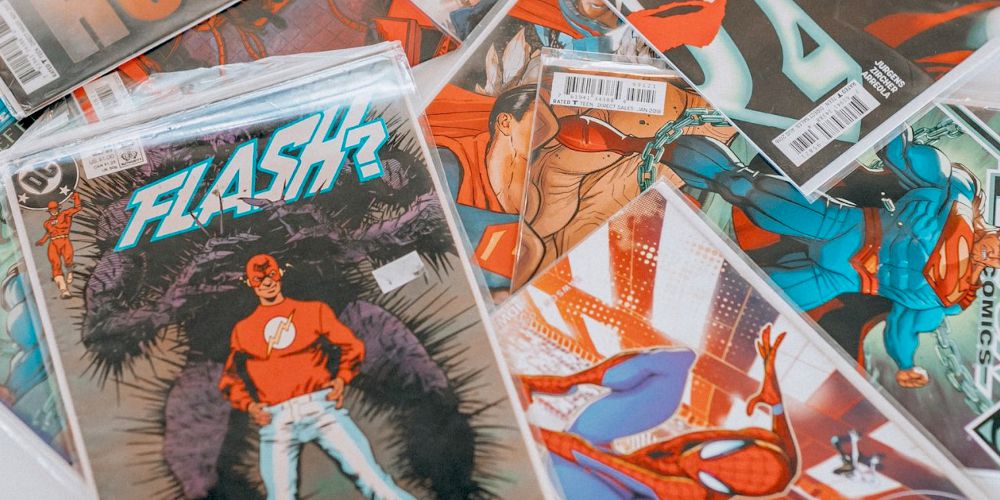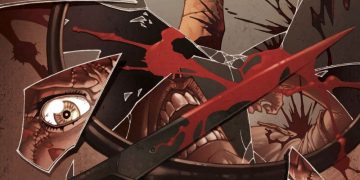Comic books and graphic novels aren't all about superheroes.
Although both mediums have a lot more to offer than spandex suits, other genres are often overshadowed by the conflicts between superheroes and villains.
If you want to expand your library beyond superheroes, this list will let you in on some other under-appreciated comic book and graphic novel genres.
Genre: Fantasy
Fantasy comics and graphic novels often transport you to a universe that's filled with mythological or fantastical creatures.
The story typically takes place in a medieval environment, but it doesn't have to. Dark fantasy also has a huge representation in comics—this subgenre combines fantasy with elements of horror.
Examples: The Sandman, Coda, Fables
Genre: Horror
Horror comics and graphic novels are exactly what they sound like. They aim to terrify you through chilling depictions of horrific events, disgusting creatures, or even by creating psychologically-disturbing scenarios.
There's truly no limit to what type of horror you'll find in comics and graphic novels—the freedom that the artist has can result in some seriously messed up images.
Examples: Locke & Key, The Walking Dead, Hellblazer
Genre: Humor
When you think about humor comics, you probably think of those classic comic strips you'd find in the Sunday newspaper, and you're not wrong.
Humor-based comics and graphic novels have since evolved into stories with more modern and sometimes, mature, humor.
That said, there aren't many comic books or graphic novels dedicated solely to humor, unless we're talking about old-school comic strips.Most writers inject humor into the story, rather than make it all about humor.
Examples: Bone, Garfield, Scott Pilgrim vs. the World
Genre: Mystery
Who doesn't love a good mystery? Mystery comics and graphic novels are always page-turners, as they constantly challenge you to solve the story's biggest questions.
As you read, you'll feel like you're deciphering the crime or anomaly alongside the main character.
Examples: Blacksad, The Fade Out, My Favorite Thing Is Monsters
Genre: Nonfiction
Just like nonfiction books, nonfiction comics and graphic novels tell a true story that addresses a real-life experience.
Wordy biographies and textbooks aren't that fun to read, and they don't always make an impact—that's why nonfiction graphic novels exist.
When a nonfiction story is accompanied by art, the story becomes much more profound and memorable.
Examples: Maus: A Survivor's Tale, Fun Home, The Complete Persepolis
Genre: Science Fiction
Unlike the fantasy genre, sci-fi comics and graphic novels involve futuristic world-building.
These stories have an emphasis on time-travel, space exploration, aliens, as well as advanced technology. They sometimes address the future of humanity, whether that future is a crumbling dystopia, or a world filled with amazing advancements.
You'll also find some sci-fi subgenres in the comic and graphic novel industry, such as cyberpunk, post-apocalyptic, and steampunk.
Examples: Saga, Paper Girls, The Incal
Genre: Superhero
The superhero genre has taken over the comic book industry. It's easy to see why the genre has become so popular.
After all, who doesn't want to imagine the existence of superhumans that can fly, shoot spider webs, or run at unfathomably fast speeds?
Everyone wants to be a superhero, fight the bad guy, and save the city, which is the plot of most superhero comics.
The superhero genre rose to popularity in the 1930s, and it's still, hands down, the most popular comic book genre.
Examples: Spider-Man, Superman, Avengers
Genre: War
War comics and graphic novels often intermingle with the nonfiction genre. Although they're usually based on real wars, they sometimes pertain to a fictional one.
This genre graphically depicts the hardship of war, and was especially popular during the 1950s-1970s, a period when The United States fought in several wars.
Examples: War Is Hell, The 'Nam, Our Army At War
What's Your Favorite Comic Genre?
Most comics and graphic novels don't belong to just one genre. Instead, they might dabble in two or even three different genres, making it difficult to fit them into one specific category.
Graphic novels and comics are often grouped together, but did you know they have some major differences? Here are some must-know distinctions between comic books and graphic novels.

